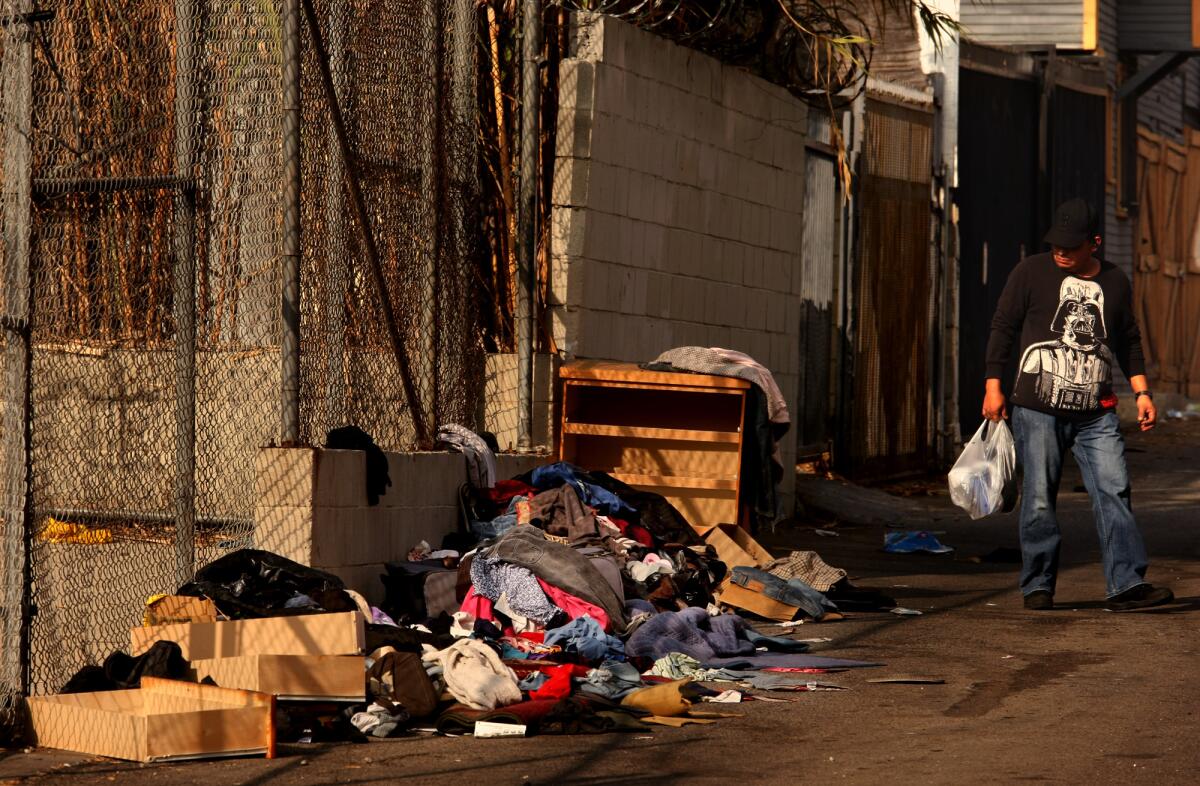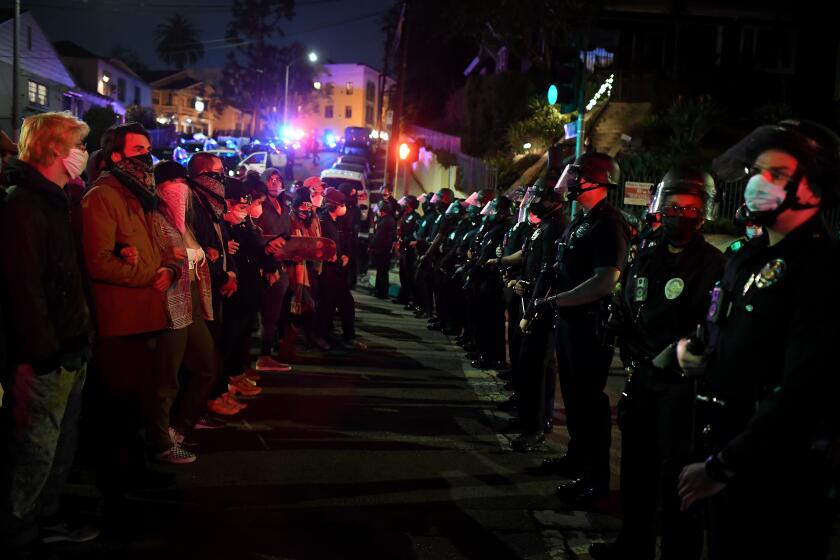L.A.’s illegal dumping problem is worsening, controller’s report says

The city of Los Angeles continues to fall short in its efforts to rein in illegal dumping despite efforts by Mayor Eric Garcetti and other city leaders to control the problem, according to a report released Wednesday.
City Controller Ron Galperin’s report looked at illegal dumping along sidewalks, streets, alleyways and other public areas. In some cases, businesses and individuals dump mattresses, furniture, construction materials and other trash to avoid having to pay waste removal fees.
“Businesses and individuals are dumping more and more garbage, debris and harmful substances in the city’s public-right-of-way, contributing to urban blight and public health risks and leading to a lesser quality of life in impacted neighborhoods,” Galperin wrote in a letter to Garcetti and the City Council.
Garcetti’s 2015 “Clean Streets” initiative sought to clean up the city’s trash-strewn areas by installing thousands of trash cans. Four years later, the mayor announced that more city inspectors would be added, as well as surveillance cameras, to root out scofflaws who illegally dispose of trash in downtown and elsewhere.
Despite those efforts, the city is seeing a rising number of complaints about trash. There was a 450% rise in requests between 2016 and 2020 to remove debris. At the same time, the city is expending more resources, with L.A. Sanitation and Environment workers picking up nearly 16,000 tons of illegally dumped waste in 2019 compared with 8,900 tons in 2015.
At the same time, the department lacks enough employees to carry out enforcement, including sworn public officers who can conduct investigations and make arrests, the report found. Also, smaller cities including Philadelphia and Phoenix have installed more cameras than L.A. to track illegal dumping, the report said.
After nearly 100 people chose to either strike or abandon their tents and accept shelter in downtown hotels, a few dozen homeless campers remained in Echo Park, vowing to resist a massive city effort expected as soon as Thursday to push them out.
While homeless encampments and illegal dumping are “two distinct issues, they often exist within the same spaces,” the report said. “This is because illegal dumpers sometimes seek out spaces that are already impacted by poor sanitary conditions.”
Certain businesses, commercial establishments and multifamily dwellings subscribe to waste collection services, but the report found that from May 2018 to December 2020, about 1,487 addresses were reported as possibly not being compliant with RecycLA regulations, the city-backed trash program.
“Inspectors have completed 1,384 site inspections and found that 661 sites (48 percent) should have been subscribed to recycLA services but were not, or were otherwise not in compliance with the city’s commercial waste hauling requirements,” the report notes.
The report recommends launching a public awareness campaign and raising fines to deter dumping. Also, the report notes that some local jurisdictions offer “community dumpster days” so residents can gather and get rid of unneeded items and waste.
Garcetti suggested Wednesday that the pandemic had made the illegal dumping problem worse. “We saw that explode,” he said when asked about Galperin’s report.
He said many people were also working from home and that federal health guidelines cautioned against moving homeless people during the pandemic.
Los Angeles Sanitation General Manager Enrique Zaldivar said the department currently has only seven enforcement staffers in the field investigating illegal dumping. He said there are 17 vacancies that “cannot be filled during the city’s hiring freeze.”
Zaldivar said that despite staffing shortages, the sanitation department had captured 144 instances of illegal dumping on camera, leading to 57 criminal cases that “have been completed or are currently under investigation.”
More to Read
Sign up for Essential California
The most important California stories and recommendations in your inbox every morning.
You may occasionally receive promotional content from the Los Angeles Times.












